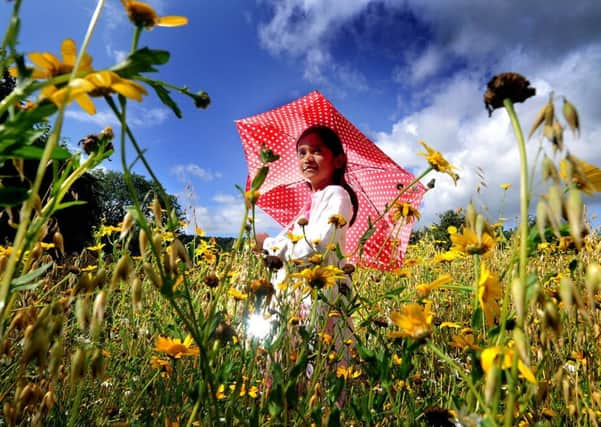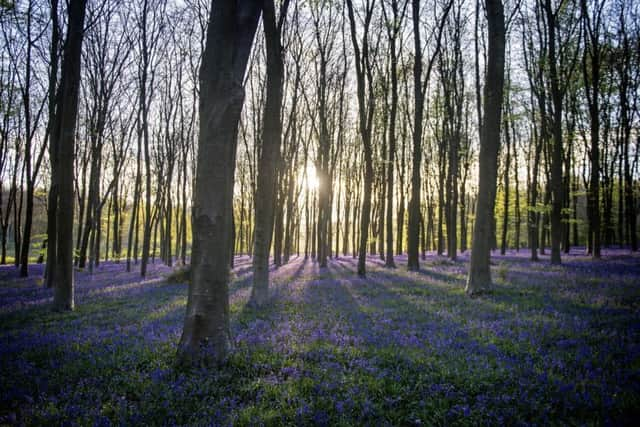Ailing flower power of young who cannot identify bluebells


According to a nationwide survey by the charity Plantlife, fewer than half (49 per cent) of people aged between 16-24 can identify the common native bluebell.
It would perhaps have been a far easier process for many in past and there are fears that the ability to name wildflowers and other flora found in Britain will diminish further with each passing generation.
Advertisement
Hide AdAdvertisement
Hide AdThe Oxford Junior Dictionary has even dropped plant names such as blackberry, and indeed bluebell, from its latest edition, a decision which has prompted a new Plantlife campaign to reacquaint the nation with its native blooms.


Today, the charity launches its Great British Wild Flower Hunt, which it has described as the UK’s first large-scale interactive guide to wildflowers.
The guide offers wildflower facts and folklore, and encourages users to both share information on social media and find out what species other people have found locally.
Users are set a challenge to identify and mark off sightings of nearly 50 flowers, which in turn earn the ‘hunter’ flower points which can be shared on social media via #WildflowerHunt. The rarer the species, the higher the points awarded.
Advertisement
Hide AdAdvertisement
Hide AdPlantlife’s botanical specialist, Dr Trevor Dines, said the guide had been designed to capitalise on more encouraging results from the charity’s recently commissioned YouGov survey, which found that despite a lack of botanical knowledge, 56 per cent of 16 to 24-year-olds would like to be able to identify more flowers.


He also urged older generations to pass on their knowledge after the poll found that 45 per cent of those aged 55 or over could identify red clover, compared to four per cent of those aged 16-24.
Dr Dines said: “White, yellow, pink, blue - wildflowers appear in the cracks in the pavement, under hedgerows and by our roadsides. But what are their names?
“If you do know about wildflowers, this is a really easy way to share that enthusiasm with the younger generation. I learnt so much from my parents and grandparents, and that generosity of spirit is what we want to encourage.”
Advertisement
Hide AdAdvertisement
Hide AdIn the Yorkshire Dales, considerable efforts are being made to better connect young people with the wildlife around them. The Yorkshire Dales Millennium Trust has run wildflower-themed educational events for children over many years.
Tanya St. Pierre, the charity’s Hay Time project officer, said it was perhaps to be expected that so few young people feel confident about identifying native wildflowers, given that huge areas of wildflower habitat had been lost nationally since the 1950s.
She said: “It’s so important to give children the chance to learn about wildflowers and to understand why species-rich habitats like traditional hay meadows are important, in supporting pollinating insects and other wildlife as part of a wider ecosystem, as well as providing links to our rural heritage and traditional skills.
“We’ve found that most youngsters really enjoy learning about wildflowers, and many go home and tell their parents about it and want to explore and learn more.
Advertisement
Hide AdAdvertisement
Hide Ad“If we can engage children in learning about and loving the landscape around them, then we have a much better chance of protecting threatened habitats like wildflower hay meadows for future generations.”
FESTIVAL IS IN FULL BLOOM
A mission to give people a better understanding of native wildlife is the motivation behind the Flowers of the Dales Festival.
The event, co-ordinated by Yorkshire Dales Millennium Trust, features 120 events. Its programme started in March and runs until October.
During the festival, there are guided walks, identification courses, art exhibitions, children’s craft activities, bug hunts and ‘grow wild’ activities.
More than 33,000 people have taken part in the festival since it was first held in 2009.
For more details and to download the festival programme, visit www.ydmt.org/festival2017